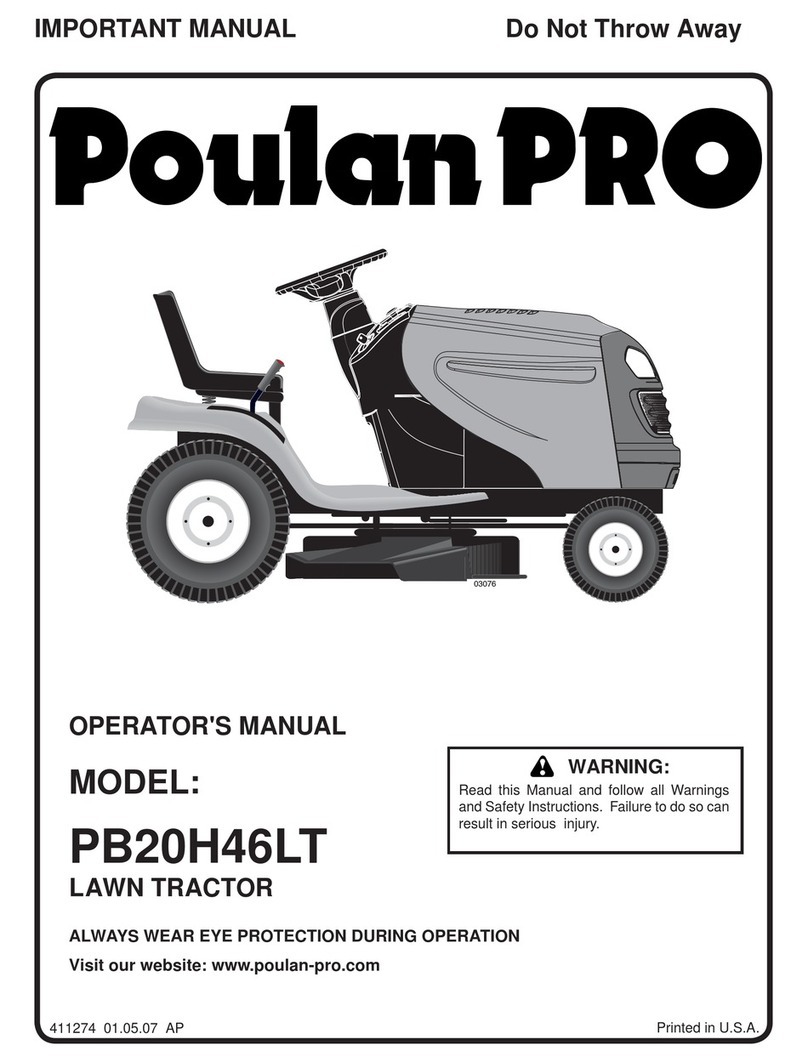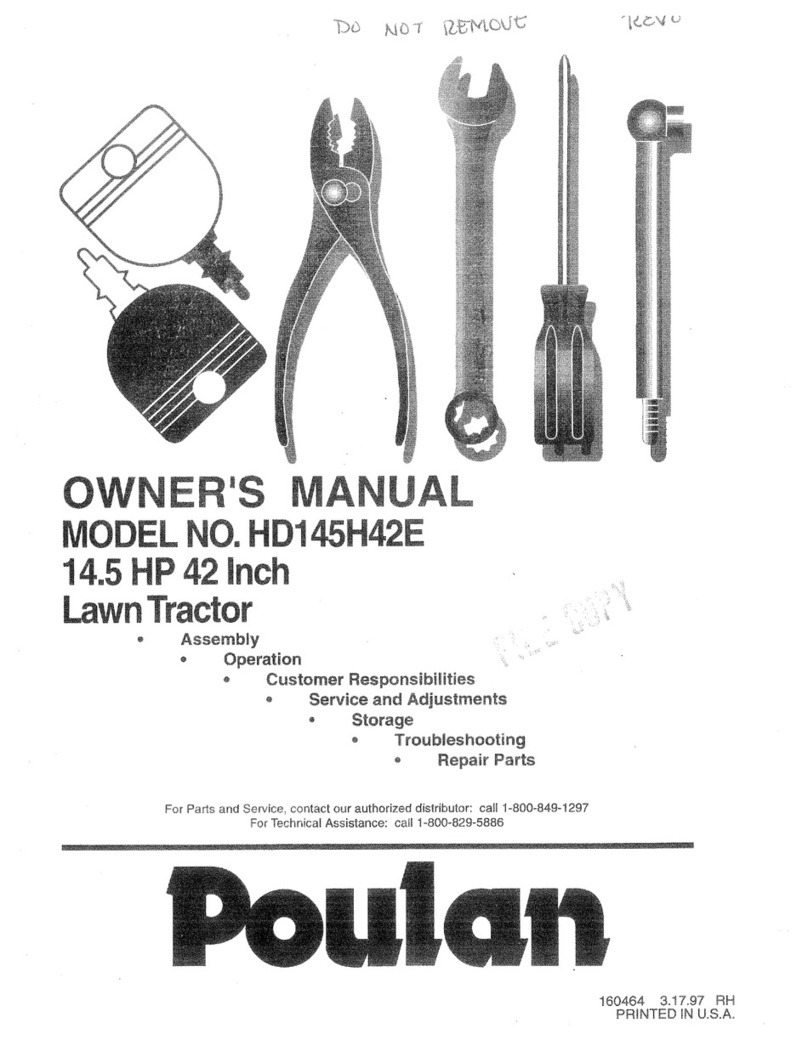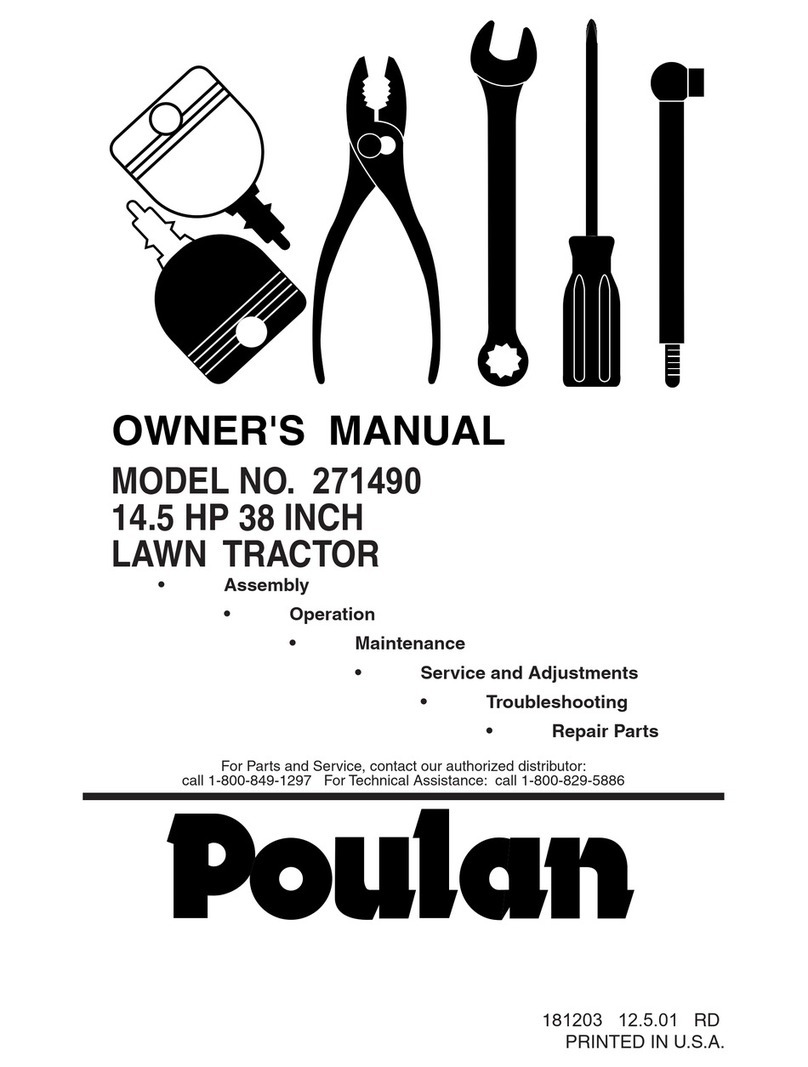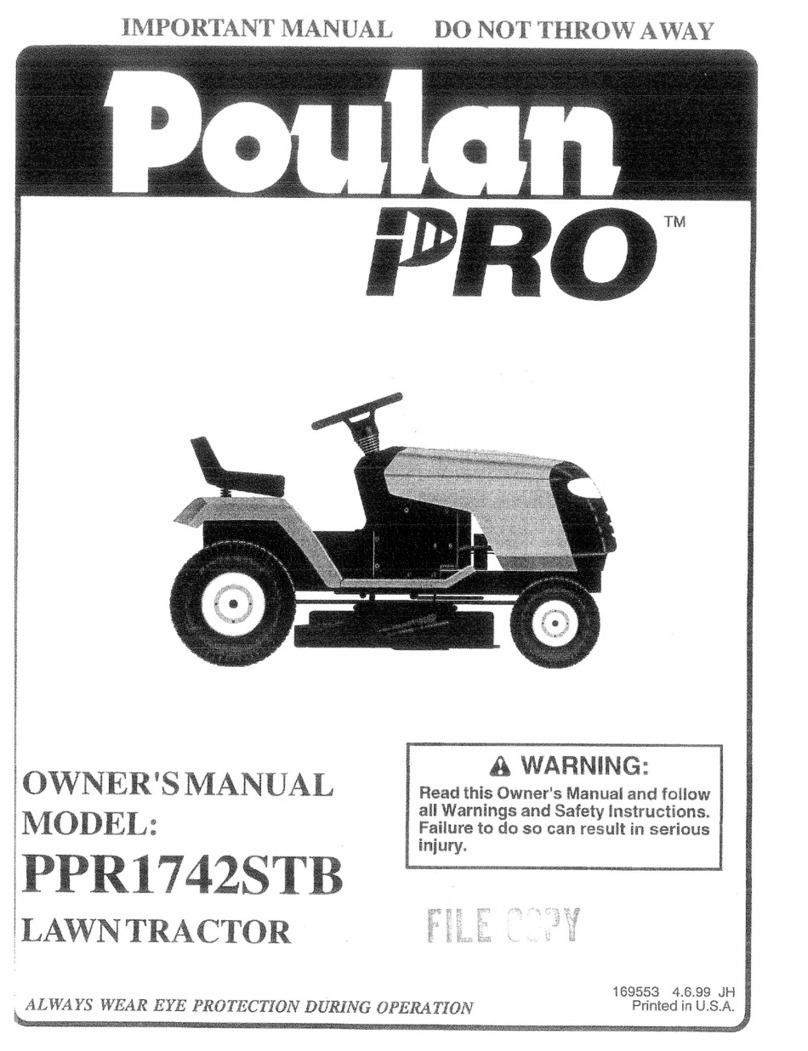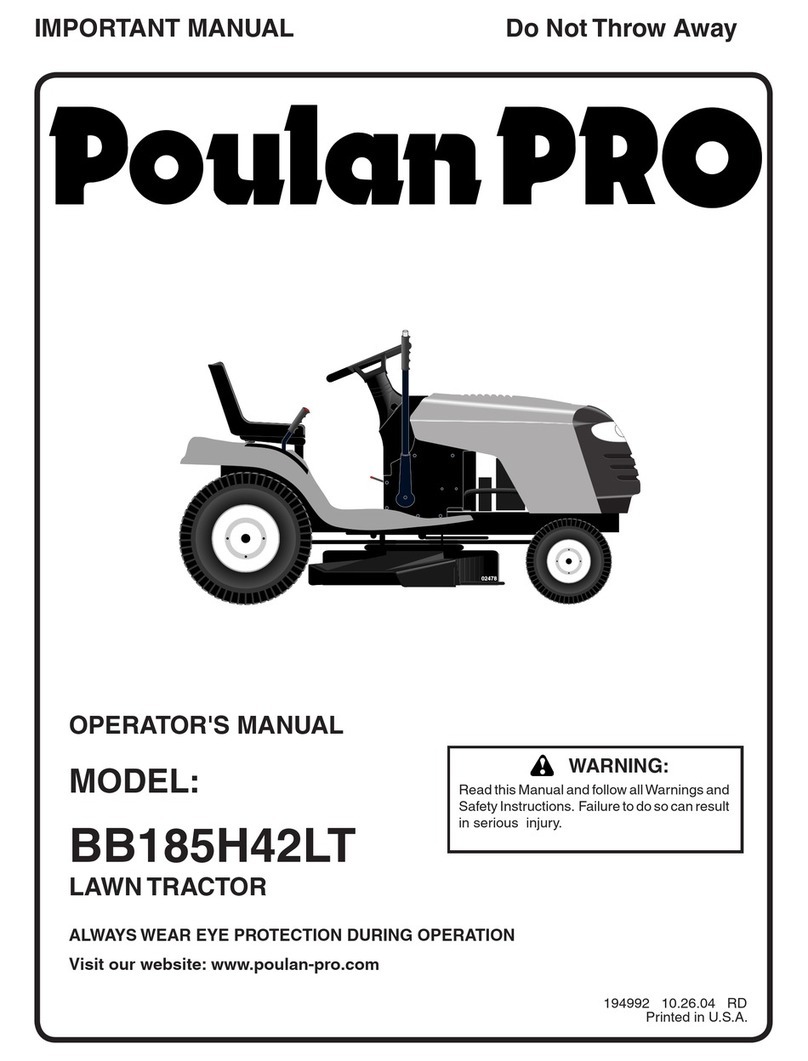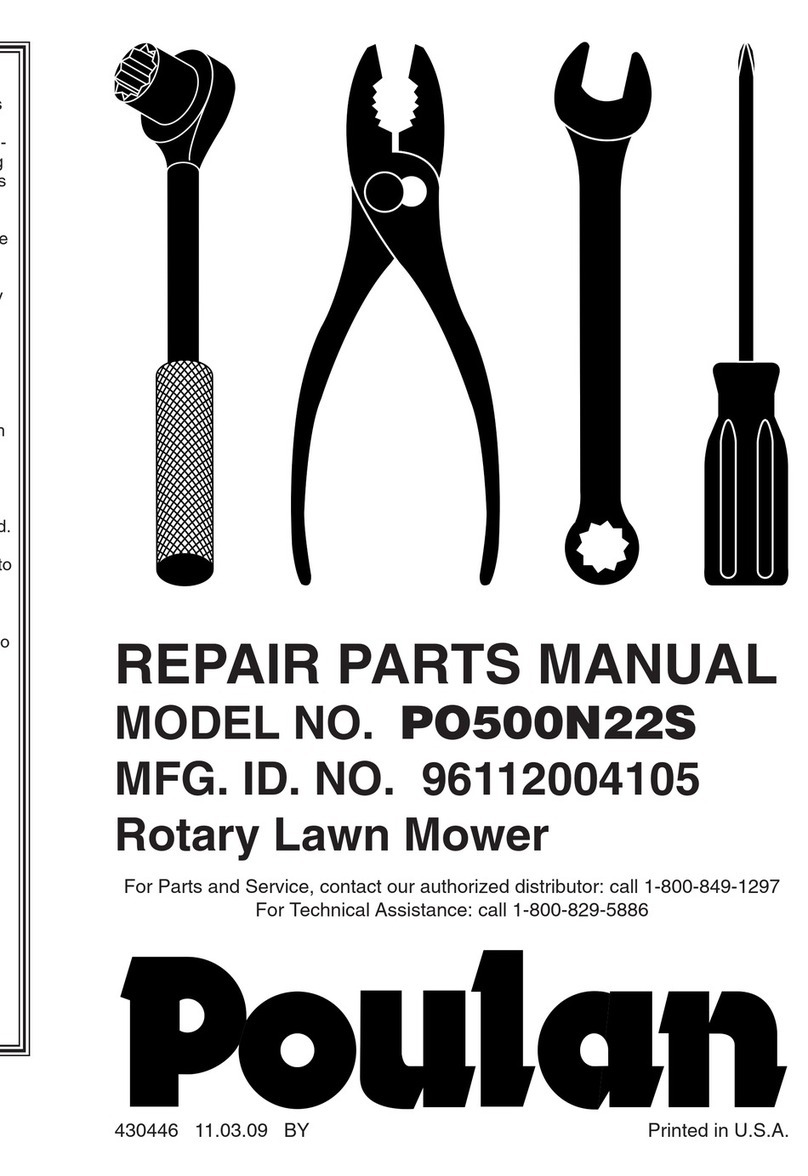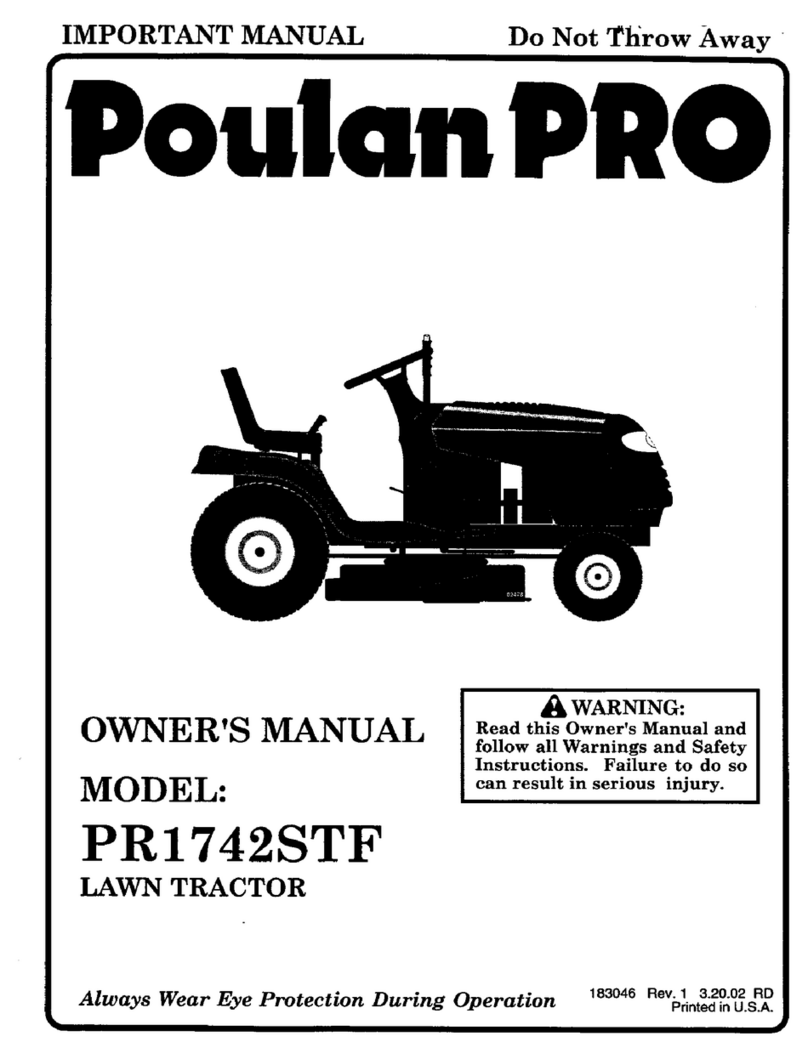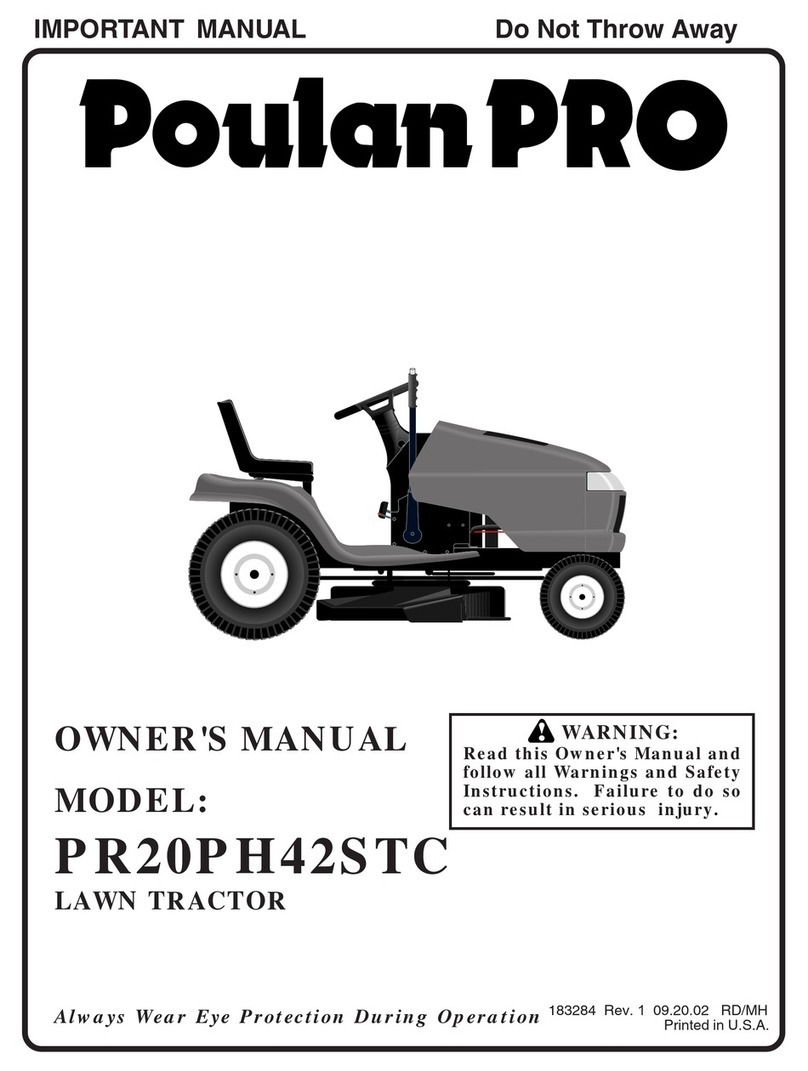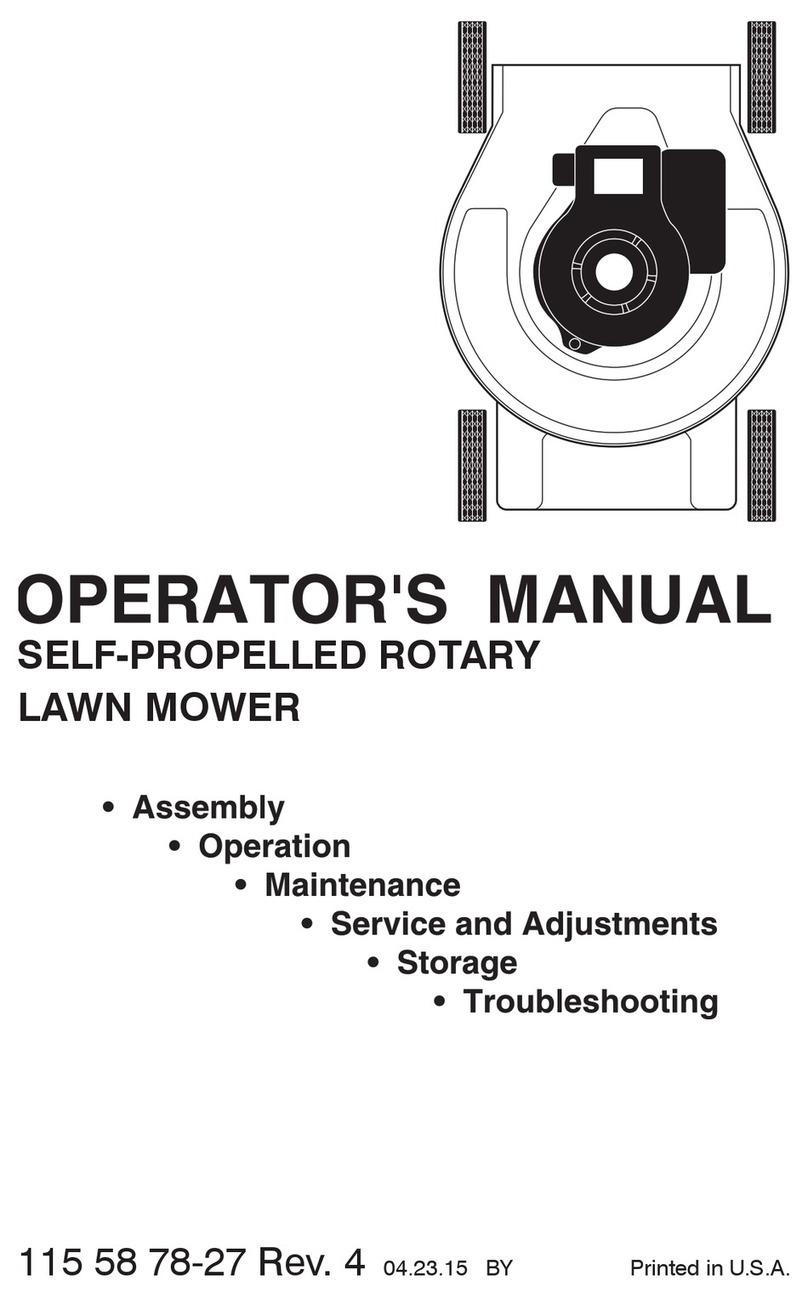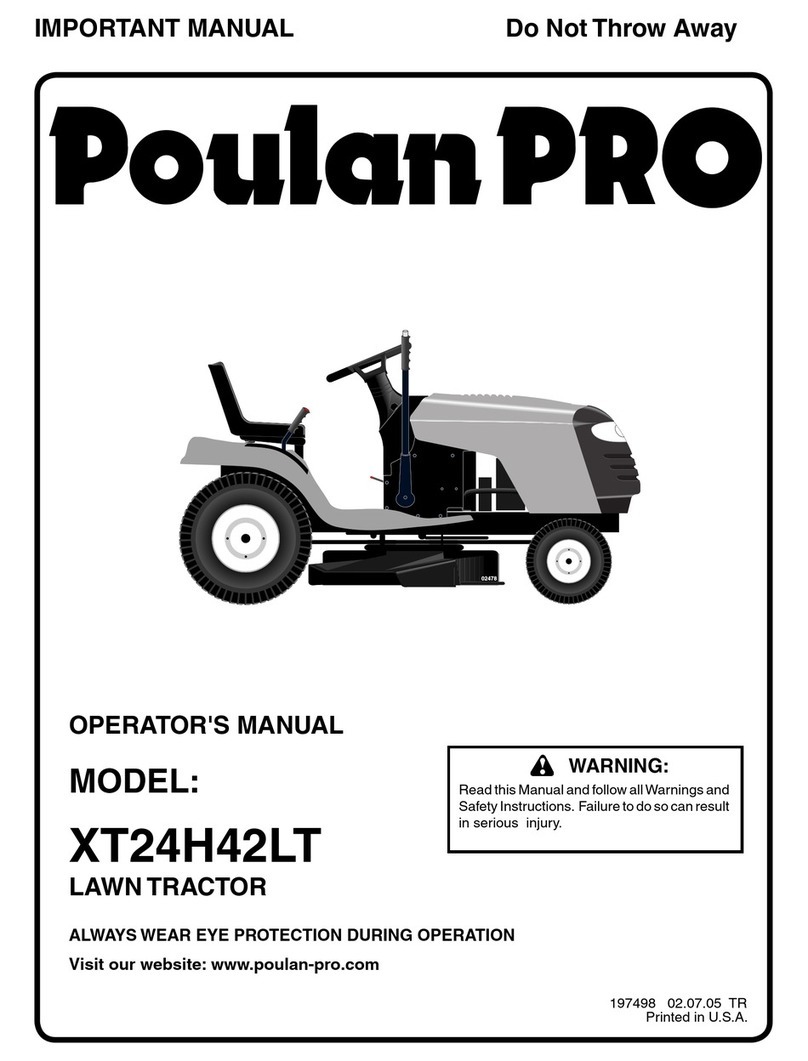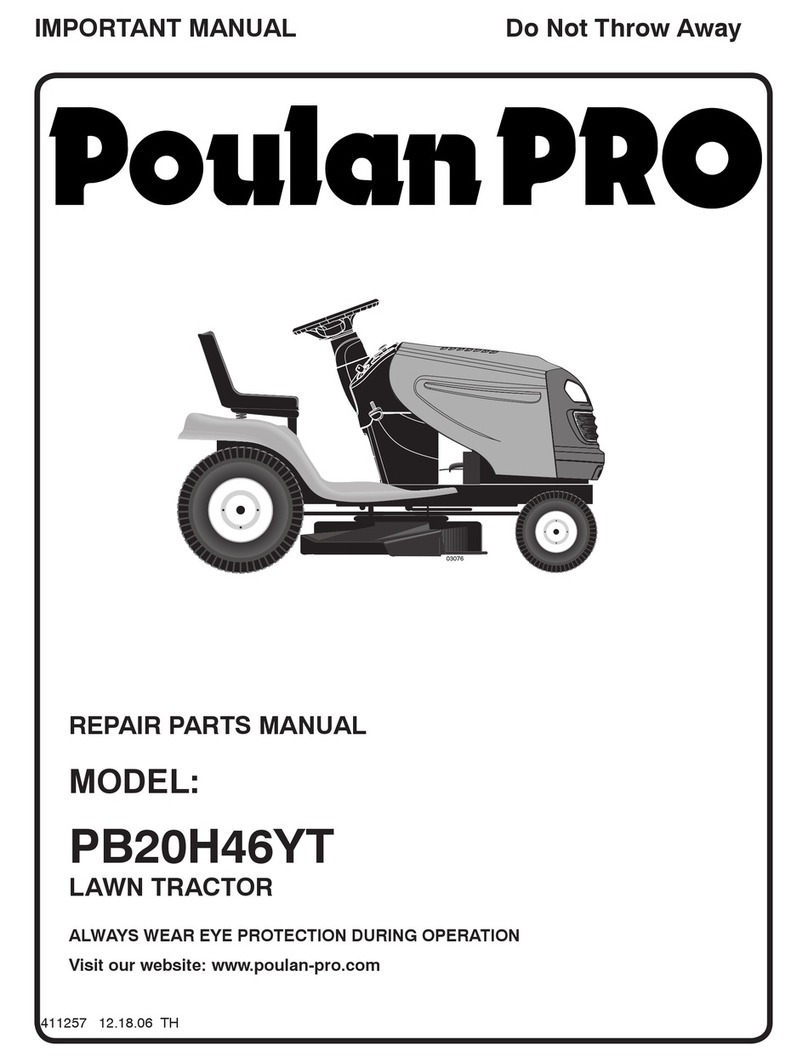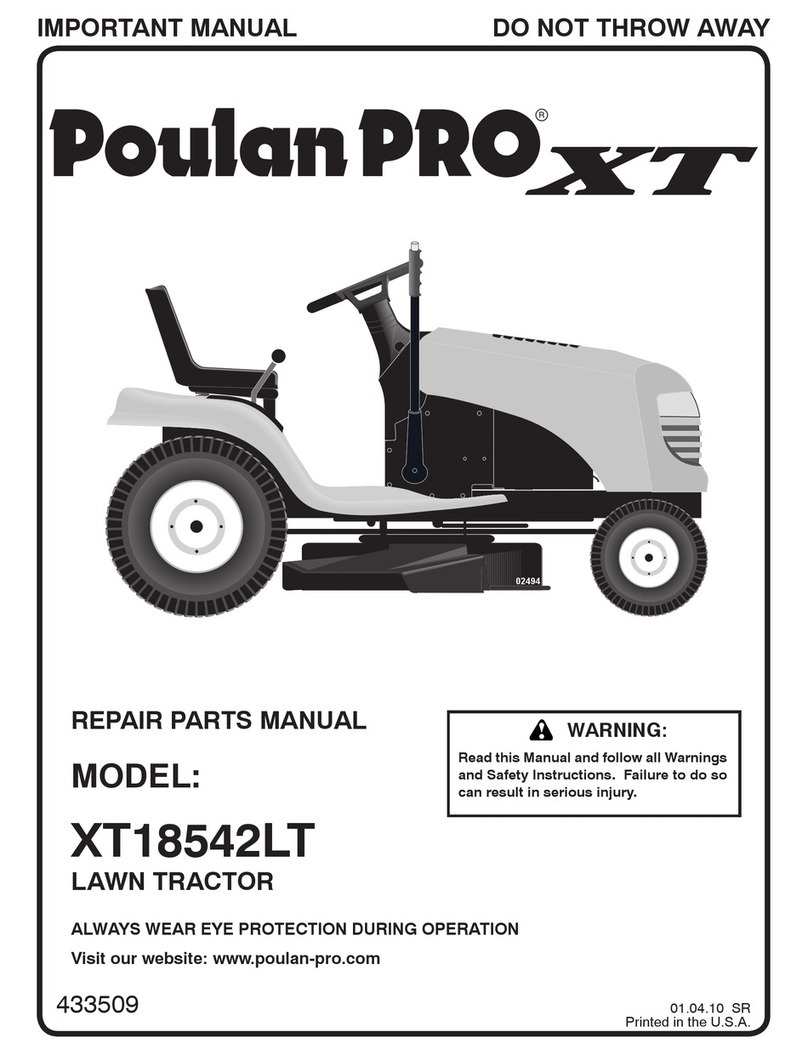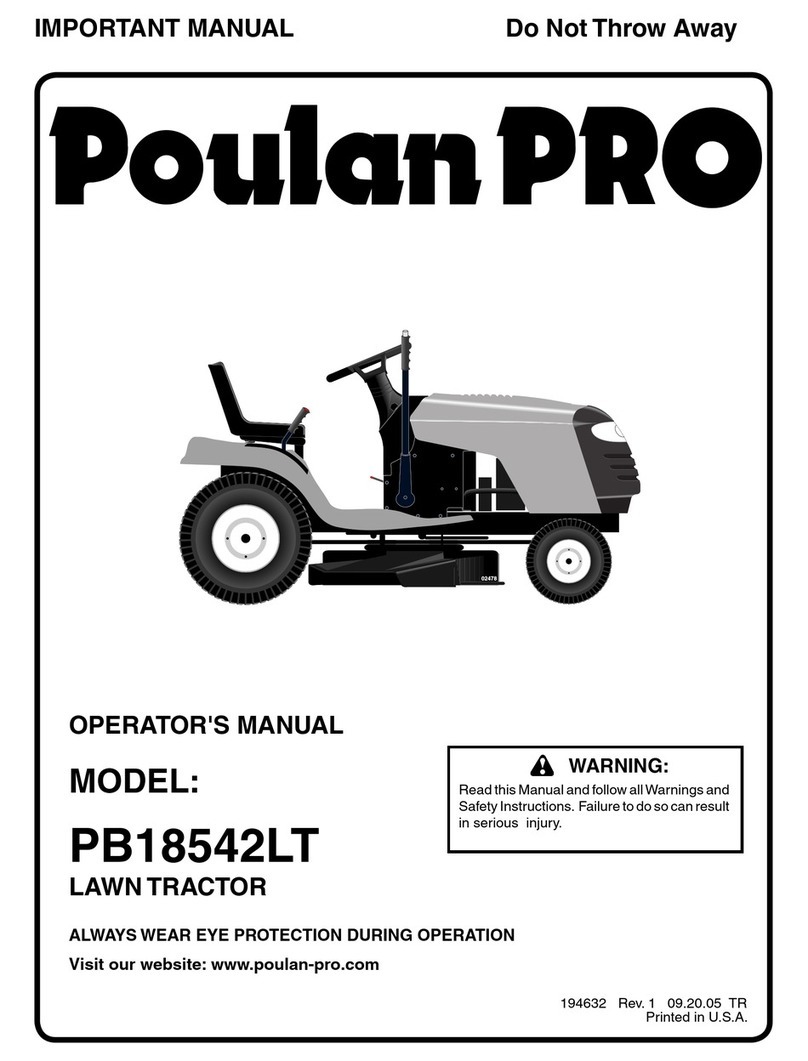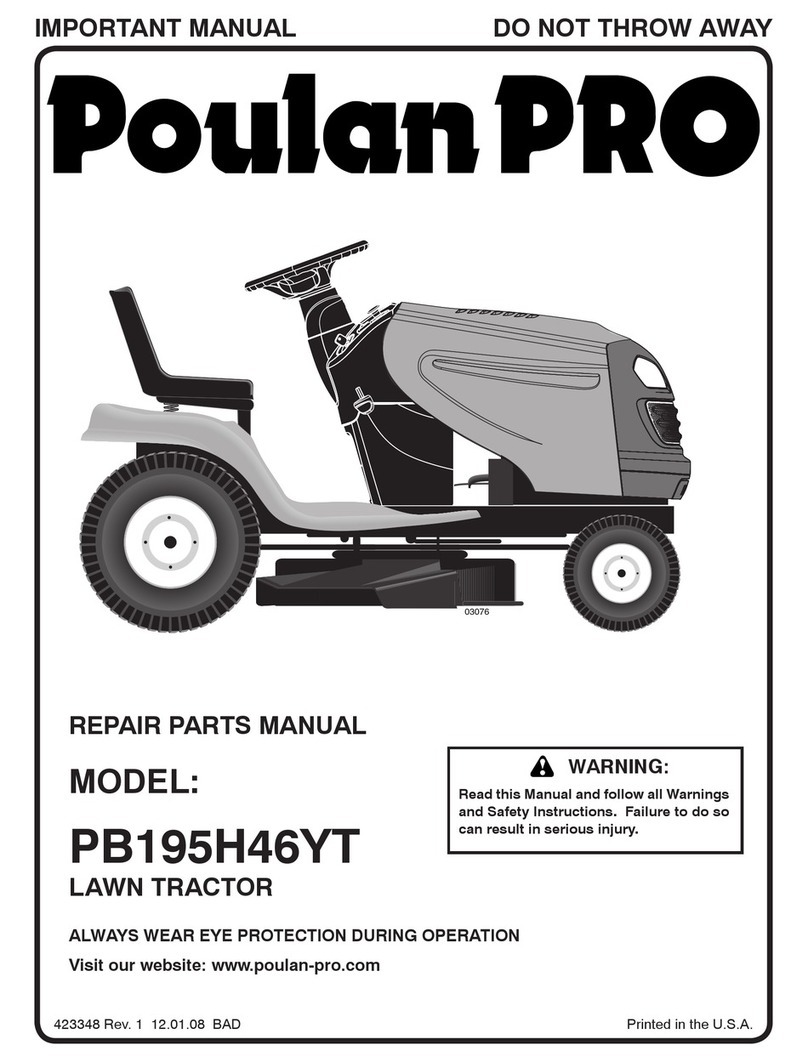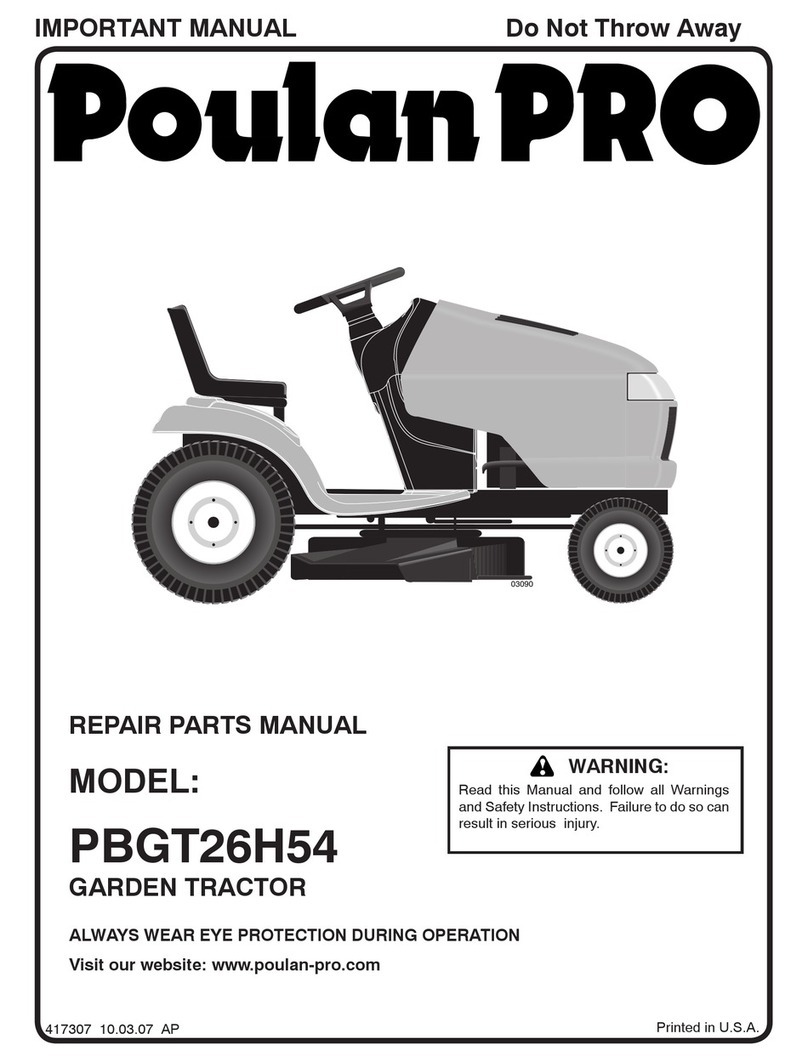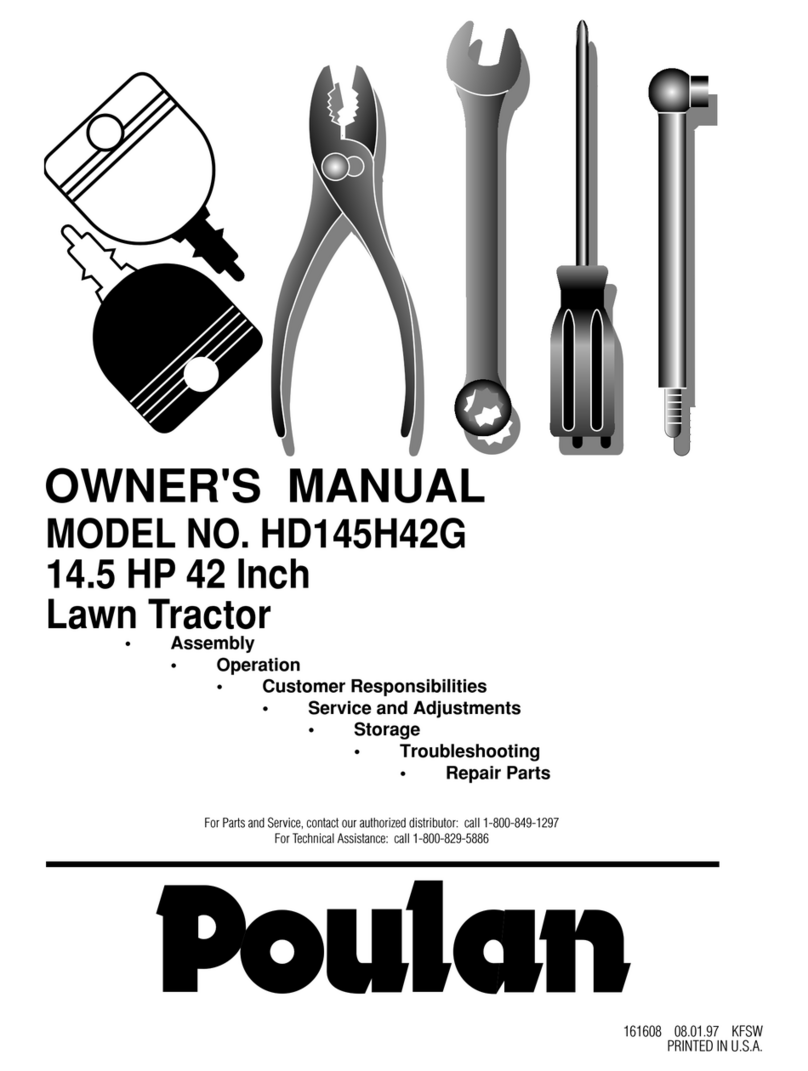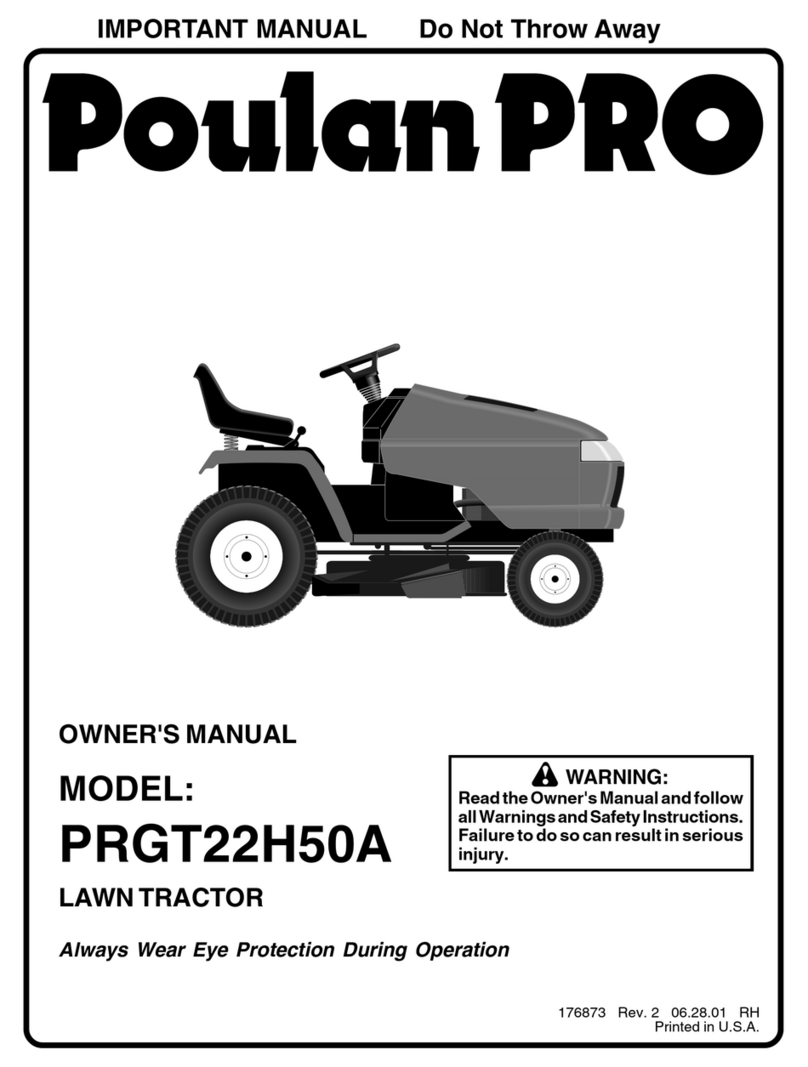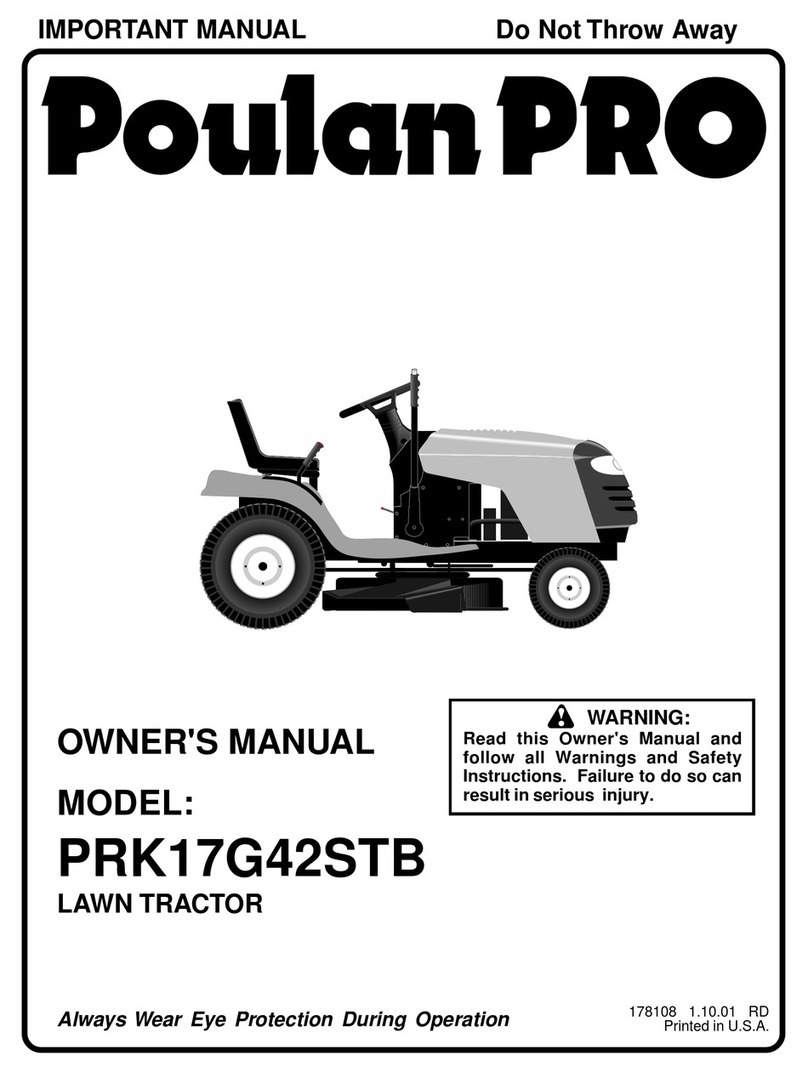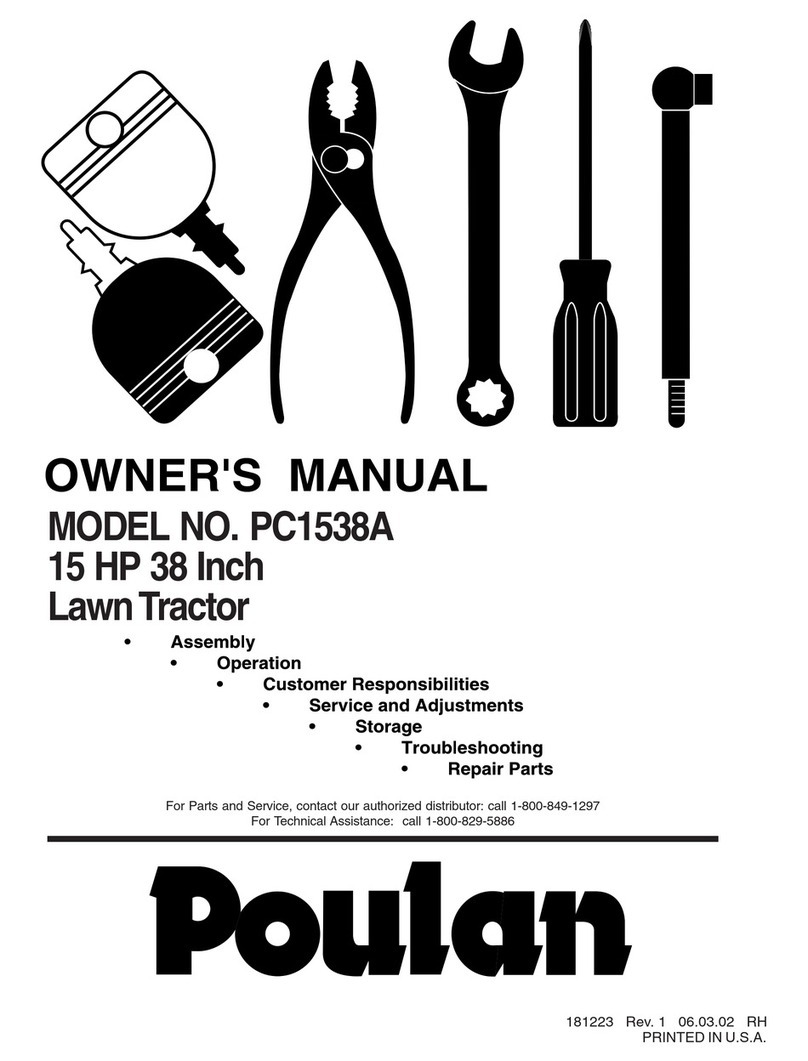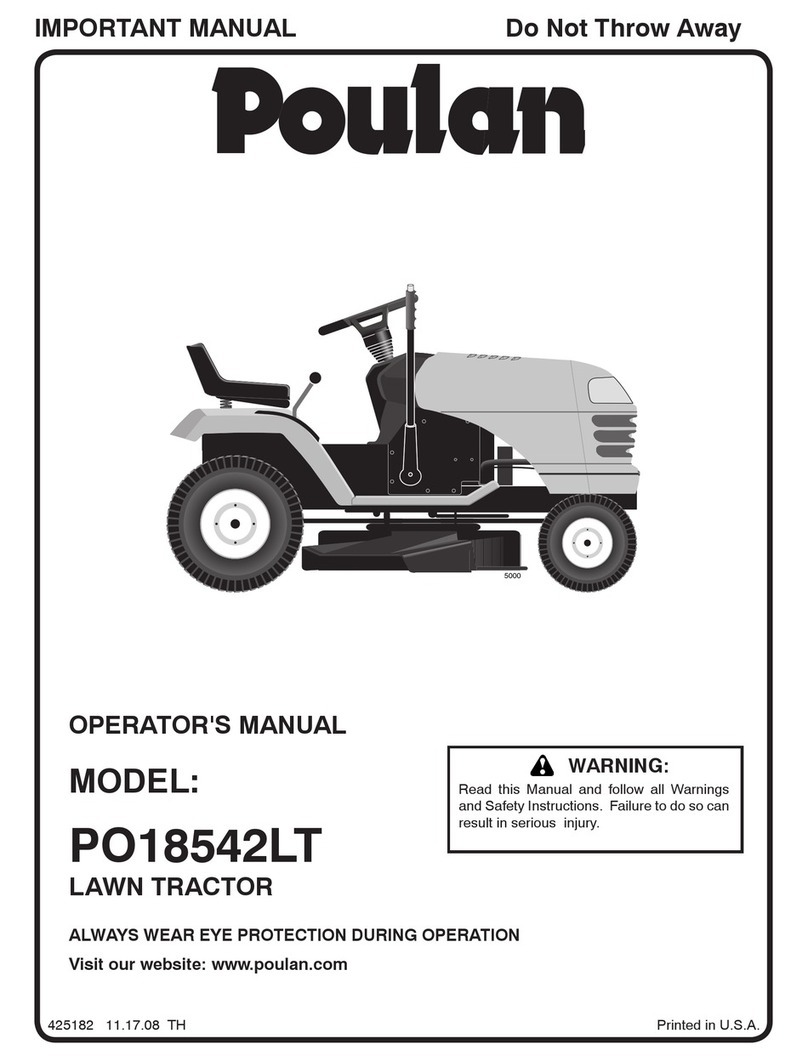SAFETY RULES
& Safe Operation Practices for Ride-On Mowers &
IMPORTANT: THIS CUTTING MACHINE IS CAPABLE OF AMPUTATING HANDS AND FEET AND THROWING OBJECTS,
FAILURE TO OBSERVE THE FOLLOWING SAFETY INSTRUCTIONS COULD RESULT IN SERIOUS INJURY OR DEATH.
I. GENERAL OPERATION
•Read, understand, and follow all instructions in the
manual and on the machine before starting.
•Only allow responsibleadults, who are familiar withthe
instructions,to operate the machine.
•Clearthe area ofobjectssuch as rocks,toys, wire, etc.,
which couldbe picked up and thrown by the blade.
• Be surethe areais clear ofother people before mowing.
Stop machine ifanyone enters the area.
•Never carry passengers.
• Do not mow in reverse unless absolutely necessary.
Always lookdown and behind before and while backing.
•Be aware ofthe mower discharge direction and do not -
point itat anyone. Do not operate the mower without
either the entire grass catcher or the guard in place.
•Stowdownbeforeturning.
• Never leavearunningmachine unattended. Alwaystum
oftblades, set parkingbrake, stop engine, and remove
keys beforedismounting.
•Turn oftblades when not mowing.
•Stop engine before removing grass catcher or unclog-
gingchute.
•Mow only in daylightor good artificial light.
•Do notoperatethe machine while under the influenceof
alcoholor drugs.
•Watch for trafficwhen operating near or crossing read-
ways.
•Use extra carewhen loading or unloading the machine
intoa trailer or truck.
•Data indicatesthat operators, age 60 years and above,
are involved in a large percentage of dding mower-
related injuries. These operators should evaluate their
ability to operate the riding mower safely enough to
protectthemselves and others from serious injury.
II. SLOPEOPERATION
Slopesare a majorfactor related to loss-of-controland tipover
accidents,whichcan resultin severe injuryor death. All slopes
requireextracaution,ifyoucannotback uptheslopeorifyoufeel
uneasyon it,do notmowit.
DO:
•Mow upand down slopes, not across.
•Remove obstacles such as rocks, tree limbs, etc.
•Watch for holes, ruts,or bumps. Uneven terrain could
overturn the machine. Tal/ grass can hide obstacles.
•Use slowspeed. Choose a low gear so that you willnot
have to stop or shift while on the slope.
Followthe manufacturer's recommendations forwheel
weightsor counterweights to improve stability.
•Use extra care with grass catchers or other attach-
ments. These can change the stability ofthe machine.
• Keepallmovementontheslopesslowand gradual Do not
makesuddenchangesinspeed or direction.
Avoidstartingor stoppingon aslope. If tires lose traction,
disengagethebladesandproceedslowlystraightdownthe
slope,
DO NOT:
•Do not turn on slopesunless necessary, and then,turn
slowlyand gradually downhill, ifpossible.
•Do notmow near dmp-offs, ditches, or embankments.
The mowercouldsuddenlytum over ifa wheel isoverthe
edge of a cliff or ditch, or if an edge caves in.
Donotmow onwet grass. Reduced tractioncouldcause
sliding.
•Do not try to stabilize the machine by putting your foot
onthe ground,
•Do not use grass catcher on steep slopes.
lU. CHILDREN
Tragic accidents can occur ifthe operator is not alert tothe
presence of children. Children are often attracted to the
machine and the mowing activity. Never assume that
childrenwill remain where you last saw them.
•Keep children out of the mowing area and under the
watchfulcare ofanother responsible adult.
•Be alert and turn machine oft ifchildren enter the area.
•Before and when backing, look behind and down for
smallchildren.
•Never carrychildren. They may fall offand be seriously
injuredor interfere with safe machine operation.
•Never allow childrento operate the machine,
•Useextra carewhen approaching blind comers, shrubs,
trees, or other objects that may obscure vision.
IV. SERVICE
•Use extra care in handling gasoline and other fuels.
They are flammable and vapors are explosive.
- Use onlyan approved container.
- Never remove gas cap or add fuel with the engine
running. AIIowenginetocoolbefore refueling. Donot
smoke.
-Never refuel the machine indoors.
-Neverstore themachine orfuelcontainer insidewhere
there isan open flame, such as a water heater.
•Never run amachine inside a closed area.
•Keep nutsand bolts,especially blade attachment bolts,
tightand keep equipment in good condition.
•Never tamper with safety devices. Check their proper
operationregularly.
•Keep machine free of grass, leaves, or other debris
build-up. Clean oilorfuel spillage. Allow machineto cool
before storing.
•Stop and inspect the equipment ifyou strike an object.
Repair, if necessary, before restarting.
•Never make adjustments or repairs with the engine
running.
•Grass catcher components are subject to wear, dam-
age, anddeterioration,which couldexpose movingparts
orallow objects tobethrewn. Frequently checkcompo-
nents and replace with manufacturer's recommended
parts,when necessary.
•Mowerblades are sharp and can cut. Wrapthe blade(s)
or wear gloves, and use extra caution when servicing
them.
•Check brake operation frequently. Adjust and se.rvice
as required.
2
